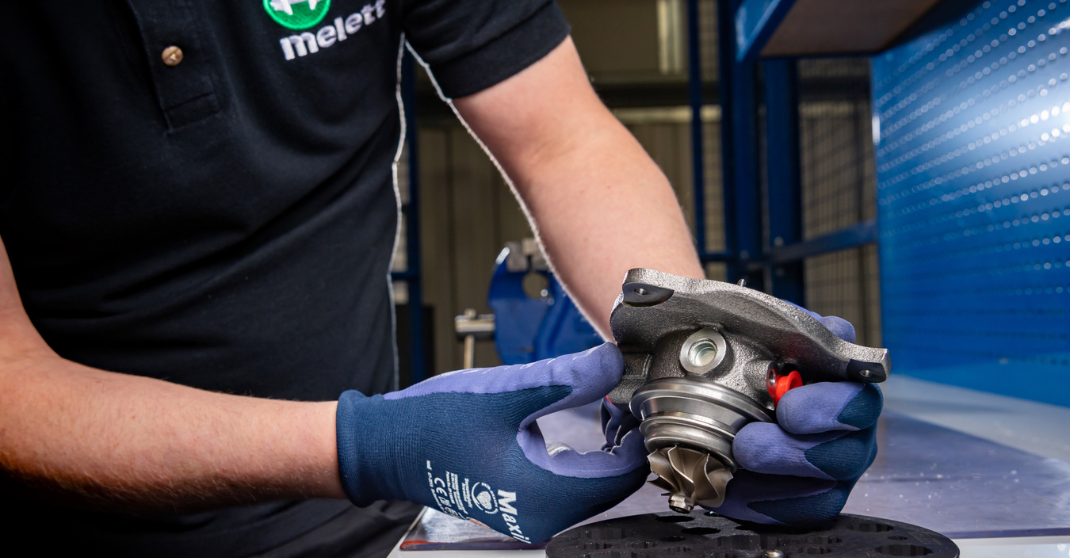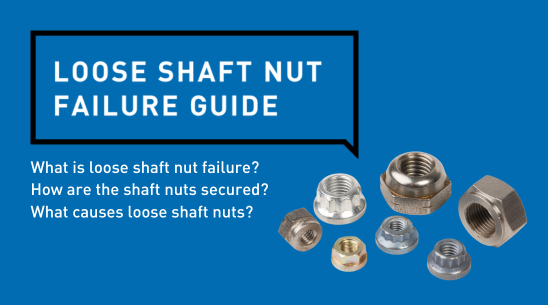
If a vehicle is suffering from rattling or grinding noises during operation, and drivers experience loss of engine power, this could be due to a loose shaft nut on the turbocharger.
In a turbocharger assembly, the shaft nut, also known as a ‘locknut’ or an ‘impeller locknut’, plays a critical role in holding the compressor wheel and rotor group parts to the shaft. To ensure proper functionality, the shaft nut must be tightened using the correct procedure and setting. If there is any kind of resistance or locking up within the rotor, the centrifugal force will continue, and the shaft nut will come loose.
A loose shaft nut can result in catastrophic damage to the compressor wheel within seconds of the turbocharger commencing operation, says Tom Wright, Group Product Manager at Melett.
In the majority of cases, a loose shaft nut is not the primary case of turbocharger failure, and being mindful of this can help identify issues and prevent them from worsening, adds Wright.
Overspeeding causes excessive radial expansion of the impeller wheel but shortens its length. This relaxes the tension on the shaft, which in turn results in loosening of the shaft nut.
Foreign object damage to the compressor or turbine wheel can affect the balance of the assembly. This can cause abrasion with the housing and loosen the shaft nut.
A blockage in the oil feed pipe can cause the bearing system to ‘grab’ onto the shaft, preventing it from rotating, this in turn causes the shaft nut to loosen. What’s more, scoring to bearings, potentially caused by oil contamination, allows the impeller wheel to rub and ‘stall’ against the housing, eventually loosening the shaft nut.
It is also important to note that in most turbochargers, the shaft nut thread direction is opposite to the direction of rotation on the shaft. If the compressor wheel rotates clockwise, the shaft nut threads should be left-handed – if this is not the case, the nut has the potential to become loose during operation.
Our UK-based turbocharger production facility adheres to strict guidelines and processes to ensure that shaft nuts are tightened to the correct tolerances, with each turbo model having its own specific torque settings carried out by its assembly team.
“Detecting the signs that indicate a loose shaft nut can help prevent further damage and reduce the risk of total turbocharger failure,” says Wright.
These include noise from the turbo during operation such as rattling or whining. The compressor blades, when checked, may display chipping or other damage if the shaft nut becomes loose and falls into the compressor wheel inducer. Technicians should also be mindful, Wright advises, of pitting around the compressor inlet or on the compressor blades.
“It’s difficult to prevent turbocharger failure from a loose shaft nut but the key symptoms of the issue can be identified to prevent the issue from worsening. The first step to avoiding loose shaft nut related turbo failure is to keep the engine in good condition and ensure the turbocharger is installed correctly.
“It’s critical that the root cause of a turbo failure is identified, as it can lead to the instant failure of another newly fitted turbo if the incorrect parts aren’t checked and changed. It’s also good practice to always change the oil and oil filter when fitting a turbocharger, using the correct grade as specified by the vehicle manufacturer,” Wright adds.
Click below to view our Loose Shaft Nut failure guide:
For further information on our turbocharger systems, part fitment, technical guides and troubleshooting, explore our website here.
More technical articles:
Expert advice on turbocharger overheating



